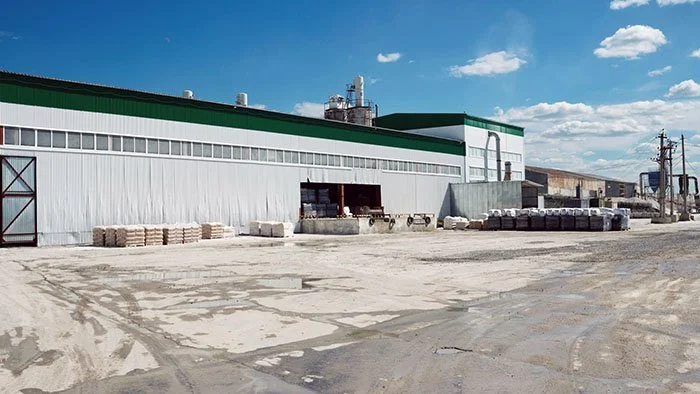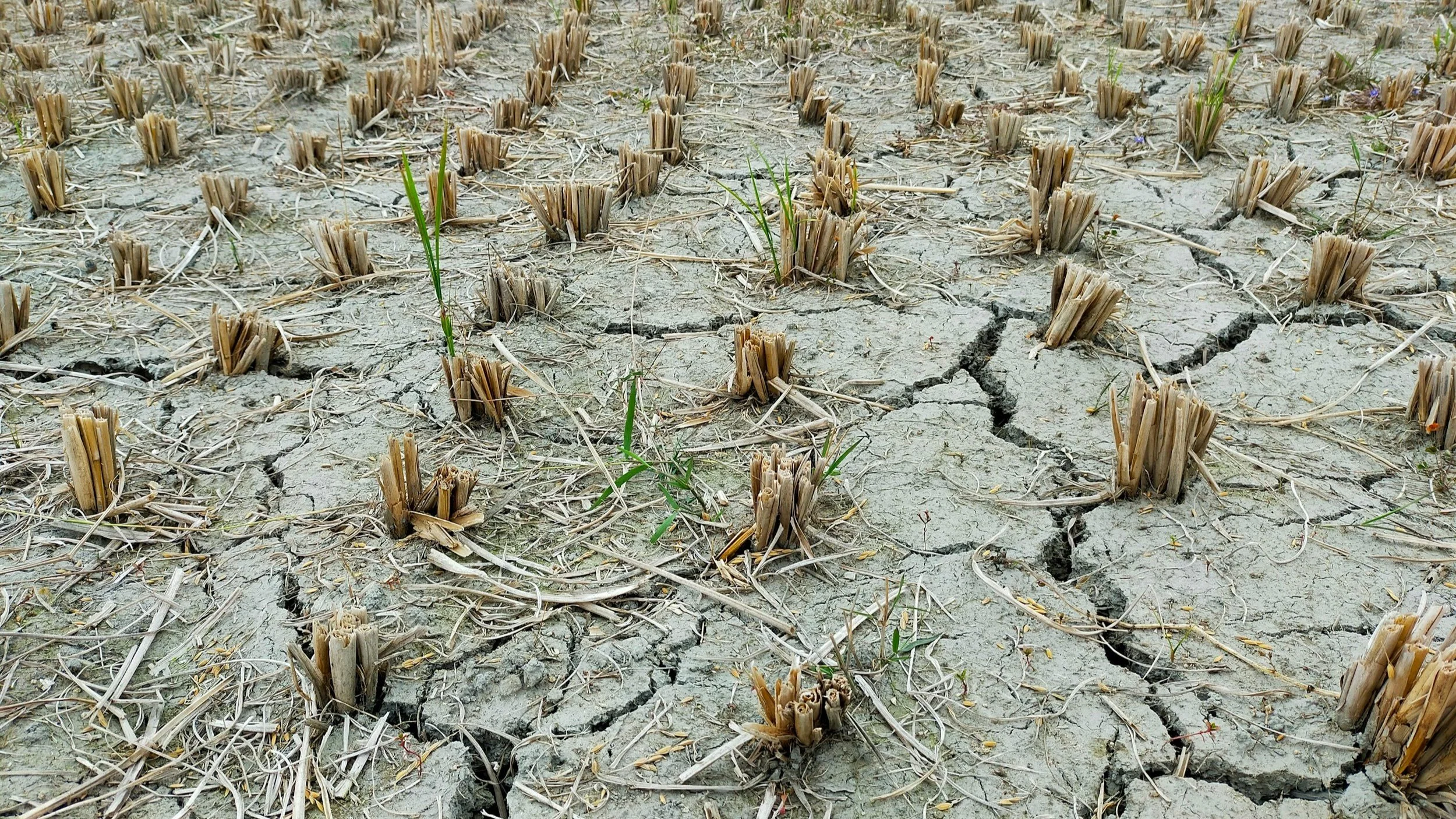How the Texas/Mexico Water Crisis Is Affecting Local Agriculture
The Rio Grande
The Texas and Mexico water crisis is a weighty issue. It affects both regions' farms and communities. Both areas face severe droughts, so there isn't enough water available. These conditions are especially challenging for farmers needing water to grow crops.
Managing water well is essential for farming. Good water management ensures crops get the water they need without waste. This practice is crucial in dry areas like Texas and northern Mexico, where water is already scarce. Efficient water use helps keep farms productive and supports local economies. It also reduces the impact of droughts.
One key part of this crisis is the 1944 water treaty between Mexico and the U.S. This treaty says that Mexico must deliver 1.75 million acre-feet of water to the Rio Grande every five years. Currently, Mexico is struggling to meet this requirement due to ongoing droughts. By October 2025, they are expected to be over 700,000 acre-feet short. This shortage has caused tension because Texas relies on this water for farming.
Understanding the water treaty and the current crisis is essential for finding solutions. These countries must work together to manage their water better. It's the only way to ensure there's enough for everyone.
Treaty Obligations and Current Dispute
The 1944 water treaty is an agreement to share water resources from the Rio Grande and the Colorado River. According to this treaty, Mexico must deliver 1.75 million acre-feet of water every five years. This water is vital for Texas, especially for its farmers who rely on it to grow crops.
Right now, this agreement has a big problem. By October 2025, Mexico is expected to be over 700,000 acre-feet short of the water it needs to deliver. This shortfall is causing a lot of tension between the two countries.
Mexico cites severe drought conditions as the reason they can't deliver enough water. The drought has affected about 90% of the country. Therefore, Mexico is struggling to meet its water delivery obligations. This has led to disagreements and calls for better cooperation. Everyone wants to ensure both countries get the water they need.
Understanding the treaty and the current problems is key to finding solutions. We need options to help Texas and Mexico better manage their water resources.
A Farm in Amarillo, Texas
Impact on South Texas Agriculture
The Texas water crisis is having a major impact on agriculture. It affects both crops and the economy.
Sugar Industry Collapse
In February 2024, the last sugar mill in Texas closed due to water shortages. This closure was a significant blow to the local economy, with over 500 jobs lost. It affected many families depending on the mill for their livelihood. The economic impact is huge, estimated at $100 million.
The sugar mill was more than just a workplace; it was a community cornerstone. Its closure highlights the severe consequences of water shortages on local industries. Many workers now face financial uncertainty. Meanwhile, the local economy is struggling to cope with the loss of such a significant employer. This situation underscores the critical need for reliable water sources.
Crop Adjustments and Challenges
Due to the U.S. water crisis, South Texas farmers are forced to make big changes. Many are shifting to more drought-resistant crops like milo. This shift is necessary because there is less water available for irrigation. As a result, farmers have to rely more on rainfall, which is unpredictable and often insufficient. This makes farming much more challenging and uncertain.
Reduced water availability for irrigation is making it difficult to maintain crop yields. Farmers are finding it challenging to adapt to these changes. This situation highlights the need for better water management and sustainable farming practices. These adjustments could help farmers cope with the ongoing water crisis.
Economic and Job Losses
The water crisis in South Texas has led to major job losses in agriculture. The citrus industry is a significant example. Citrus trees need consistent water to survive and produce fruit. Without enough water, these trees struggle, threatening the entire industry. Dale Murden, president of Texas Citrus Mutual, has observed this issue first hand. He noted that rainfall alone isn't enough for healthy citrus crops. This puts many jobs at risk and could lead to considerable economic losses.
Another area hit hard is vegetable farming. Severe droughts have caused crop losses like leafy greens, beets, and cabbage. Farmers report lower yields due to less water, hurting their income and the local economy. Texas A&M's AgriLife notes a total economic impact of nearly $500 million. This impact stretches across the Lower Rio Grande Valley area.
Cotton farming in Texas has also suffered. In 2022, Texas cotton farmers lost about $2.1 billion due to drought. This loss affected many rural communities that rely on cotton farming. Farmers are planting more drought-resistant crops and using water-saving methods. Yet the economic impact remains severe.
The water crisis affects more than just farms. Many local businesses depend on agriculture. As farmers struggle, these businesses also face hard times. Losing agricultural jobs and lower crop yields mean less money spent locally. This causes further damage to the economy.
Diplomatic and Political Responses
Texas lawmakers are calling to withhold federal funds from Mexico until it complies with the water treaty. They believe this will pressure Mexico to meet its obligations and help Texas get its necessary water. Mexican President López Obrador has stressed the importance of cooperation. He says both countries must work together to solve the water crisis and reduce tensions.
Representative Monica De La Cruz weighed in:
“Mexico's breach has not just jeopardized our agricultural heritage and the livelihood of over 500 workers, it also threatens our region's economy and national food security. The current situation is unsustainable.”
Senator John Cornyn emphasized the need for strong diplomatic efforts:
“The U.S. must use every diplomatic tool at its disposal to ensure Mexico’s compliance. We will continue to look for ways to support South Texas’s agriculture community, which is suffering from a lack of water.”
Efforts are ongoing to negotiate a new agreement to ensure reliable water deliveries. Negotiations are challenging, but both sides are committed to finding a lasting solution. Both countries' officials are discussing ways to address the current water shortages. They're also looking for ways to prevent future disputes.
Long-term Concerns and Climate Change
Climate change is exacerbating the water crisis in Texas and Mexico. Higher temperatures and less runoff are the main problems.
As temperatures rise, droughts will become more common and severe. Higher temperatures mean more water evaporates, leaving less for farming and other uses. This presents challenges for farmers growing crops and communities needing enough water. Knowing how agriculture affects the environment is important for finding solutions.
Runoff helps refill rivers, lakes, and reservoirs. Climate change might reduce runoff in the Rio Grande basin by up to 25% by 2050. This will make water even scarcer and lead to more competition between Texas and Mexico.
Long-term water scarcity is a big challenge. Farmers need to use sustainable agriculture practices to deal with less water. This could include growing crops that need less water and improving irrigation systems. It could also include vertical farms and hydroponic systems, which use less water.
Communities also need to save water better. One method is fixing leaks in water systems. Another involves encouraging people to use less water. It's important to create better rules for managing water use. These efforts are crucial to ensure everyone has enough water in the future.
Higher temperatures, less runoff, and long-term water scarcity highlight the problem. We need to better manage water in the Texas and Mexico regions. Addressing these challenges now is critical. It's the only way both countries can achieve a more sustainable and secure water future.
Local Farmers' Struggles and Adaptations
The ongoing water crisis has caused severe challenges for South Texas farmers. The lack of water has destroyed crops and made future planning very difficult.
One clear example is Mike England, a farmer from Mercedes, Texas. He lost 500 acres of sugarcane when the mill closed. This loss underscores the severe impact of the water shortage on agriculture.
The uncertainty of water availability makes it hard for farmers to plan for future crops. With no guarantee of water, many fields remain barren. Farmers hesitate to plant new crops because they don't know if there will be enough water to sustain them. This leads to financial strain and uncertainty about the future of farming in the region.
Farmers are trying to adapt by changing their farming practices. Many are shifting from water-intensive crops like sugarcane to more drought-resistant crops. They are also looking into more efficient irrigation systems and other water-saving technologies. Yet, these changes take time and money. The immediate future remains uncertain for many farmers.
Broader Impact on the Community
The water crisis in South Texas is affecting more than just farmers. It has led to moratoriums on new residential developments in certain areas. No new homes can be built until the water situation improves. These restrictions are necessary to ensure there is enough water for current residents.
The broader economic impact of water shortages is also significant. Local businesses that depend on agriculture are struggling. Reduced crop production means less money for the community. People spend less, which causes businesses to face lower sales and possible closures. This situation highlights the urgent need for better water management. We must sustainably support both agriculture and community growth.
Vertical Farming and Hydroponics
Vertical farming and hydroponics are new solutions for the South Texas water crisis. These methods provide efficient and sustainable ways to grow crops.
Benefits of Vertical Farming
Several benefits make vertical farming and hydroponics more sustainable than traditional farms. These technologies are great options for addressing water shortages. They can also help support sustainable farming in South Texas.
Efficient Use of Space: Vertical farming grows crops in stacked layers, making the most of limited space. This means more crops can be grown in smaller areas than traditional farming.
Controlled Environment Agriculture (CEA): Vertical farming often occurs indoors. This setup lets farmers control light, temperature, and humidity around their crops. They can grow crops all year round, no matter what the weather is like outside.
Reduced Land Use: Vertical farming needs much less land than traditional farming. Growing crops vertically uses less space on the ground. This benefit is helpful in areas with limited farmland.
Water Efficiency of Hydroponics
Hydroponics is an incredibly efficient way to use water for farming. It offers several key benefits:
Drastic Reduction in Water Use: Hydroponic systems use up to 98% less water than most traditional farming methods. The water is recycled and reused within the system.
Recirculation of Water: The water in hydroponics is reused, which minimizes water wastage. This recirculation helps keep the plants healthy without needing constant fresh water.
Elimination of Soil Evaporation: Hydroponics doesn't use soil. This method means there's no water loss through soil evaporation.
Resilience to Climate Change
Vertical farming and hydroponics are largely unaffected by climate change. They provide stable growing conditions for crops, regardless of weather or season:
Protection from Weather Extremes: These systems operate indoors. They are not affected by droughts or extreme weather conditions. This protects crops from unpredictable outdoor conditions.
Consistent Production: In controlled environments, farms can maintain crop production year-round. These systems work regardless of external climate challenges.
Economic and Social Benefits
Vertical farming and hydroponics also bring several economic and social benefits:
Job Creation: These new farming methods create job opportunities. in the vertical farming and hydroponics sectors.
Local Food Security: These methods create food security by increasing local food production. They also reduce dependence on external water sources.
Sustainable Growth: Vertical farming and hydroponics support sustainable agriculture practices. They conserve water and other resources, contributing to long-term environmental health.
Growing with Eden Green
Eden Green Technology offers innovative solutions for sustainable farming. Our greenhouses incorporate vertical farming and hydroponics to create sustainable indoor farms. If you want to partner with Eden Green, now is the perfect time to get involved.
Eden Green’s mission is to revolutionize agriculture. We seek to provide efficient, sustainable farming methods and increase food security. Learn more about how it works and its benefits to local communities and the environment.
We're looking for partners to support this mission. If you want to be part of this exciting movement, contact us today! We'd love to explore partnership opportunities to supply fresh, healthy food to your store or restaurant.











Discover what vertical farming is, how it works, and major problems it can solve for current and future generations.